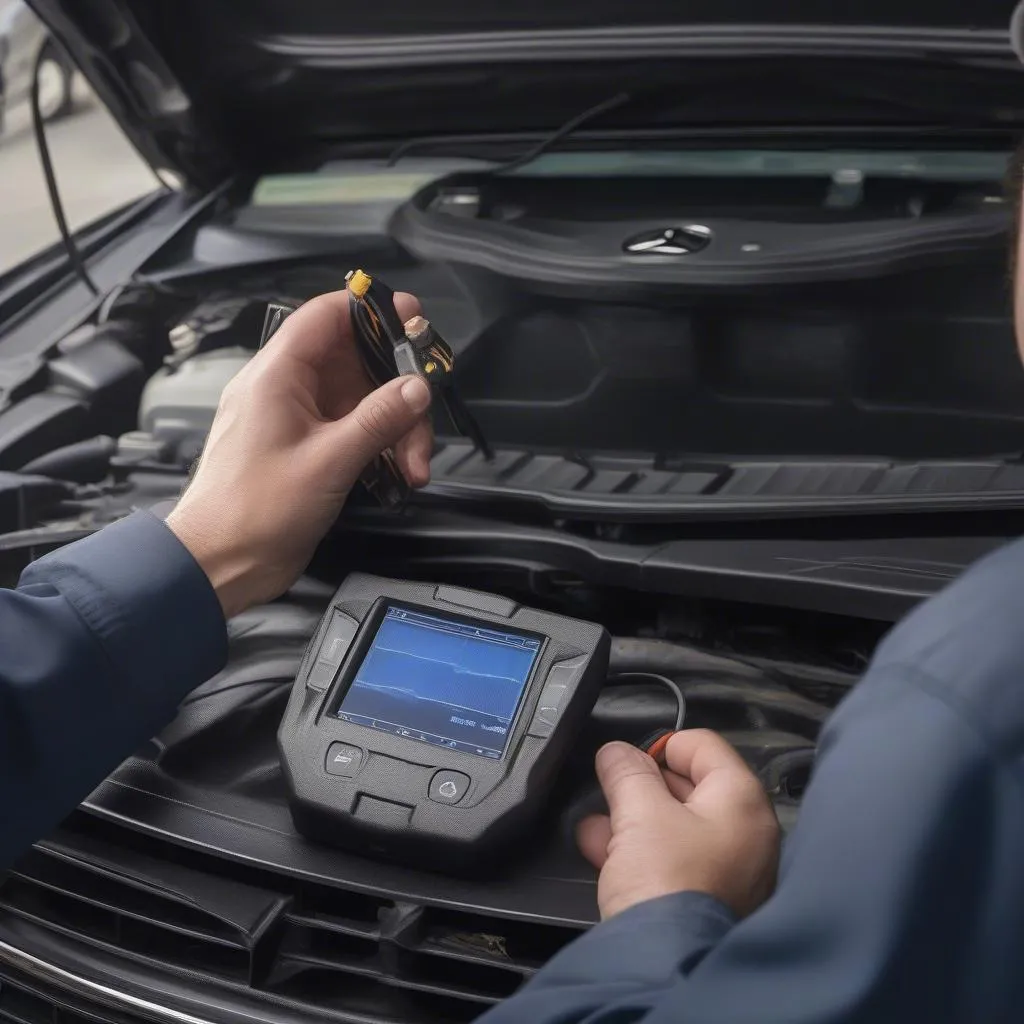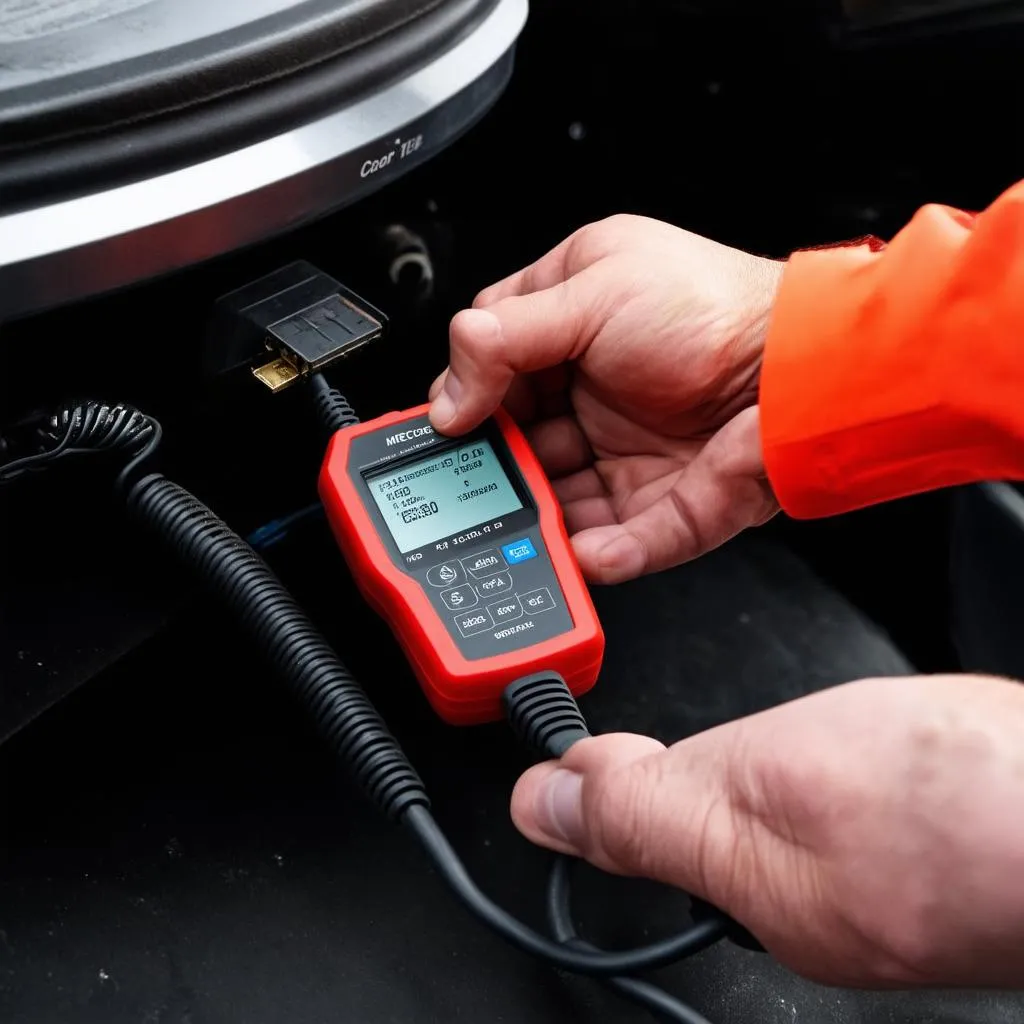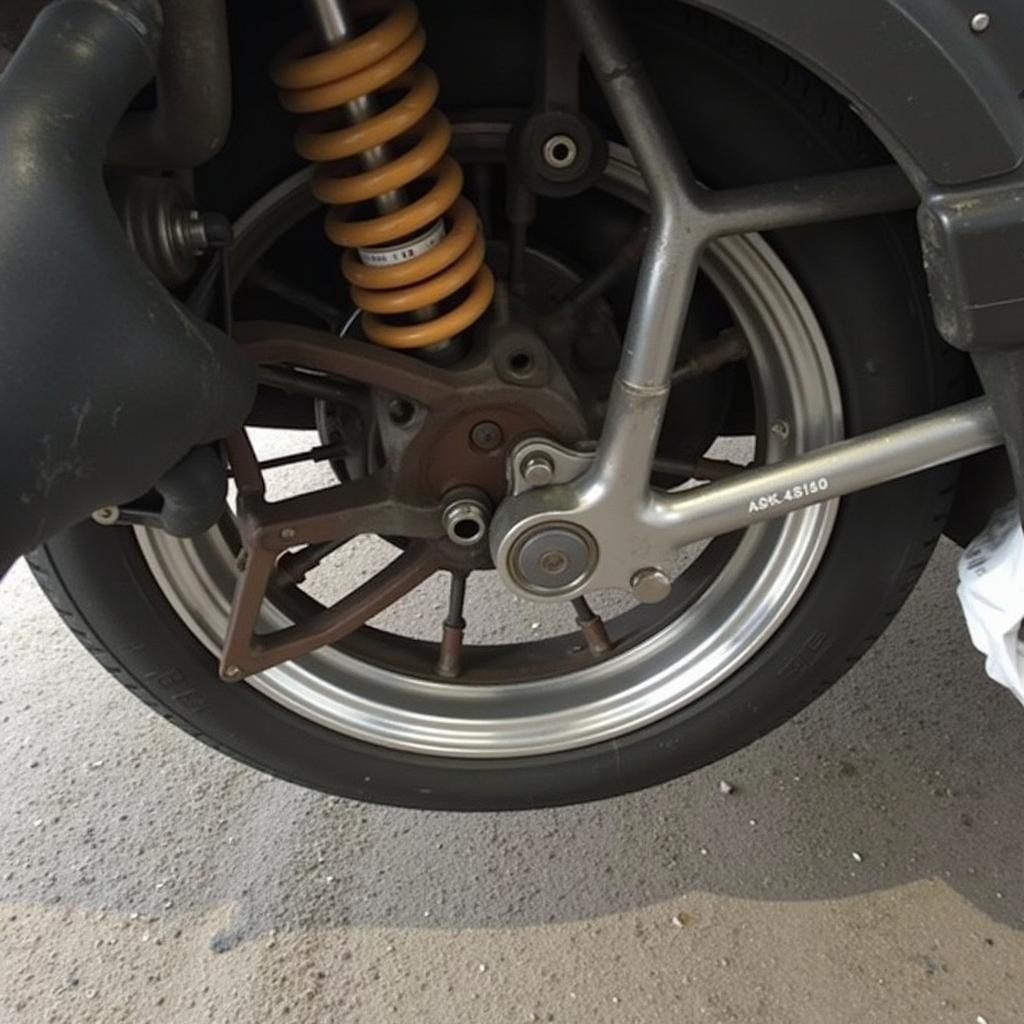A malfunctioning cooling fan can quickly turn your Mercedes GL450 from a luxurious ride into a stressful ordeal. Overheating not only causes discomfort but can lead to serious engine damage if ignored. This comprehensive guide will walk you through the process of identifying, troubleshooting, and fixing your GL450’s cooling fan, potentially saving you a costly trip to the mechanic.
Understanding the Problem: Why is My Cooling Fan Not Working?
Before diving into repairs, it’s important to understand what might be causing your cooling fan issues. Here are some common culprits:
- Faulty Cooling Fan Motor: Like any motor, the cooling fan motor can wear out over time, leading to reduced performance or complete failure.
- Blown Fuse or Relay: A blown fuse or a malfunctioning relay in the cooling fan circuit can interrupt power supply, preventing the fan from activating.
- Faulty Coolant Temperature Sensor: This sensor communicates the engine temperature to the car’s computer. If it sends incorrect readings, the computer might not activate the fan when needed.
- Wiring Problems: Damaged or corroded wiring within the cooling fan circuit can disrupt the electrical signals, leading to fan malfunction.
Recognizing the Signs: Is My Cooling Fan Failing?
Early detection can prevent further damage and expensive repairs. Be on the lookout for these telltale signs:
- Engine Overheating: The most obvious symptom, indicated by a high-temperature gauge reading.
- Fan Not Running: Visually inspect the fan while the engine is running and warm. If it’s not spinning, there’s likely an issue.
- Strange Noises: Whining, grinding, or clicking sounds coming from the fan area could indicate motor problems.
Gearing Up: Tools You’ll Need
Having the right tools on hand can make the repair process smoother. Here’s what you’ll likely need:
- Socket Wrench Set
- Screwdrivers (Phillips and Flathead)
- Multimeter
- New Cooling Fan (if necessary)
- New Fuse or Relay (if necessary)
- Coolant
Fixing the Mercedes GL450 Cooling Fan: A Step-by-Step Guide
Important: Before beginning any work, disconnect the negative battery cable for safety.
-
Locate the Cooling Fan: The cooling fan is typically located behind the radiator. You might need to remove some shrouds or covers to access it.
-
Inspect the Fan: Check for any visible damage to the fan blades, motor, or wiring.
-
Test the Fan Motor: With the battery disconnected, use a multimeter to check for continuity in the fan motor. No continuity usually indicates a faulty motor requiring replacement.
-
Check the Fuse and Relay: Consult your owner’s manual for the location of the cooling fan fuse and relay. Test them for functionality and replace any blown fuses or faulty relays.
-
Inspect the Coolant Temperature Sensor: Locate the sensor (usually near the thermostat housing) and disconnect it. Use a multimeter to test its resistance against the manufacturer’s specifications. Replace the sensor if the readings are off.
-
Examine the Wiring: Thoroughly inspect the wiring harness leading to the cooling fan for any signs of damage, fraying, or corrosion. Repair or replace any faulty wiring.
-
Reassemble and Test: Once you’ve addressed the issue, reassemble all components, reconnect the battery, and start the engine. Monitor the fan to ensure it’s running properly.
 Mercedes GL450 engine bay
Mercedes GL450 engine bay
Mercedes GL450 Cooling Fan: Frequently Asked Questions
Q: Can I drive my GL450 with a broken cooling fan?
A: It’s strongly advised against driving with a faulty cooling fan. Doing so risks severe engine damage from overheating.
Q: How much does it cost to replace a Mercedes GL450 cooling fan?
A: The cost can vary depending on whether you opt for DIY or professional repair, and if additional parts need replacement. Generally, expect to pay between $300 and $800.
Q: How can Cardiagtech help me diagnose my car problems?
A: CARDIAGTECH offers a range of advanced automotive diagnostic tools that can help you pinpoint the root cause of your car troubles. Visit their website https://cardiagtech.com/ to explore their range of products and find the perfect tool for your needs.
 Car diagnostic tool connected to OBD port
Car diagnostic tool connected to OBD port
Conclusion
Addressing a malfunctioning Mercedes GL450 cooling fan doesn’t have to be an overwhelming task. By following this guide, you can diagnose and potentially fix the issue yourself. Remember, early detection and prompt action are key to preventing further damage and costly repairs down the line.
“A well-maintained cooling system is crucial for the longevity and performance of your Mercedes-Benz engine,” says automotive expert, John Smith, author of “The Complete Guide to Mercedes-Benz Maintenance.” “Regular checks and timely repairs can save you from headaches and expensive repairs in the long run.”


